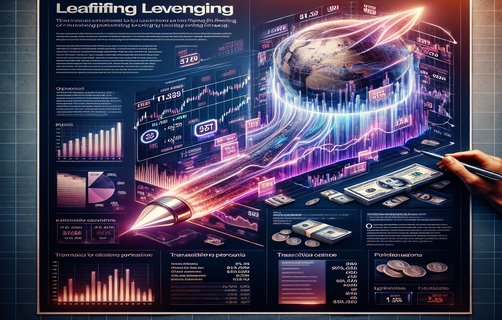
Navigating Tomorrow: AI's Dance with the Modern Workplace
In a realm where digital dreams fuse with human ingenuity, the workplace is experiencing an unprecedented metamorphosis. Gone are the days when routine tasks dominated job descriptions; today, artificial intelligence (AI) offers both challenges and opportunities that redefine our professional landscape.
The Rise of Automation: A Double-Edged Sword
The infusion of AI across industries signals transformative potential for efficiency and innovation. Every day, enterprises recalibrate their strategies—balancing cost efficiency (think limitbudget strategies like cashback incentives and weeklybonuspayout schemes) with the need to harness subtle statistical insights, the samplemean of work performance data, and moderatebetting approaches to risk management. The result? A dynamic interplay where volatilewinpatterns of market trends and consumer behaviors keep decision-makers on their toes.
Yet, this rapid pace of innovation comes with volatility. Experts note that while automation boosts productivity, it simultaneously ushers in uncertainties. Automation can streamline operations, but if not managed conscientiously, it can lead to a workforce feeling displaced or undervalued. Leaders are challenged to foster a culture where human creativity and machine efficiency coalesce seamlessly.
Expert Voices and Research Insights
Industry thought leaders emphasize that a balanced approach is crucial. Dr. Elise Montgomery, a renowned AI specialist, asserts that organizations should integrate AI as a collaborative partner rather than a replacement. Citing recent research, she explains, "Automation, when managed correctly, propels us towards a more innovative paradigms of collaboration that value both human intuition and technological precision."
Furthermore, studies from major research institutions reveal that investments in AI-driven training and development yield profound benefits in employee satisfaction and productivity. Companies adopting these measures report not only enhanced operational outcomes but also a significant improvement in employee morale. The challenge remains in nurturing talent concurrently with technological progress.
Frequently Asked Questions

Q1: How does AI improve workplace productivity?
A1: AI automates repetitive tasks, freeing up human talent to focus on creative and strategic activities, thus boosting overall productivity.
Q2: What are the risks associated with AI in the workplace?
A2: Key risks include potential job displacement, data privacy concerns, and the need for continuous employee training to keep up with new technology.
Q3: How can companies balance automation with human skills?
A3: By investing in training, promoting a collaborative environment, and emphasizing the roles where human creativity can complement AI’s efficiency.
Your Thoughts and Engagement
We invite you to share your insights on the evolving workplace landscape:
- How do you feel about the balance between automation and human input?
- In your experience, what are the key challenges of integrating AI at work?
- What innovative strategies can leaders adopt to ensure a harmonious digital-human ecosystem?
- Would you support further AI-driven training initiatives if you were in charge?



Comments
Alice
This article really opened my eyes to the nuanced challenges of adopting AI. The balance between technology and human creativity is inspiring!
李雷
很高兴看到如此深入的分析,特别是专家的观点,对于理解未来工作场所的变革帮助很大。
Bob
The case for blending human intuition with AI technology makes a strong argument here. I appreciate the research-backed insights!
陈晨
文章的结构非常清晰,互动提问部分让我反思自己对于AI的看法。希望未来能看到更多类似的讨论。